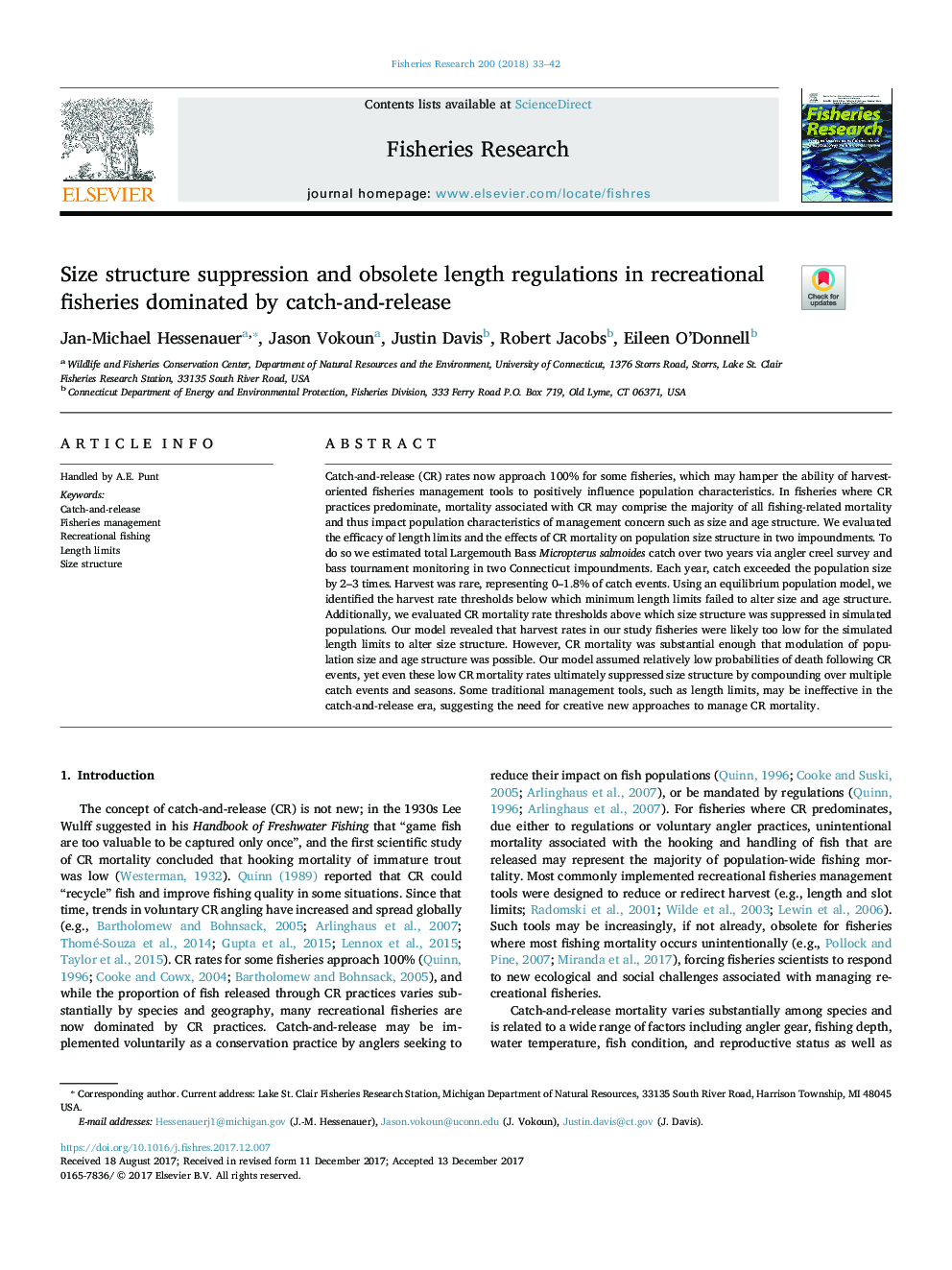| Article ID | Journal | Published Year | Pages | File Type |
|---|---|---|---|---|
| 8885503 | Fisheries Research | 2018 | 10 Pages |
Abstract
Catch-and-release (CR) rates now approach 100% for some fisheries, which may hamper the ability of harvest-oriented fisheries management tools to positively influence population characteristics. In fisheries where CR practices predominate, mortality associated with CR may comprise the majority of all fishing-related mortality and thus impact population characteristics of management concern such as size and age structure. We evaluated the efficacy of length limits and the effects of CR mortality on population size structure in two impoundments. To do so we estimated total Largemouth Bass Micropterus salmoides catch over two years via angler creel survey and bass tournament monitoring in two Connecticut impoundments. Each year, catch exceeded the population size by 2-3 times. Harvest was rare, representing 0-1.8% of catch events. Using an equilibrium population model, we identified the harvest rate thresholds below which minimum length limits failed to alter size and age structure. Additionally, we evaluated CR mortality rate thresholds above which size structure was suppressed in simulated populations. Our model revealed that harvest rates in our study fisheries were likely too low for the simulated length limits to alter size structure. However, CR mortality was substantial enough that modulation of population size and age structure was possible. Our model assumed relatively low probabilities of death following CR events, yet even these low CR mortality rates ultimately suppressed size structure by compounding over multiple catch events and seasons. Some traditional management tools, such as length limits, may be ineffective in the catch-and-release era, suggesting the need for creative new approaches to manage CR mortality.
Related Topics
Life Sciences
Agricultural and Biological Sciences
Aquatic Science
Authors
Jan-Michael Hessenauer, Jason Vokoun, Justin Davis, Robert Jacobs, Eileen O'Donnell,
